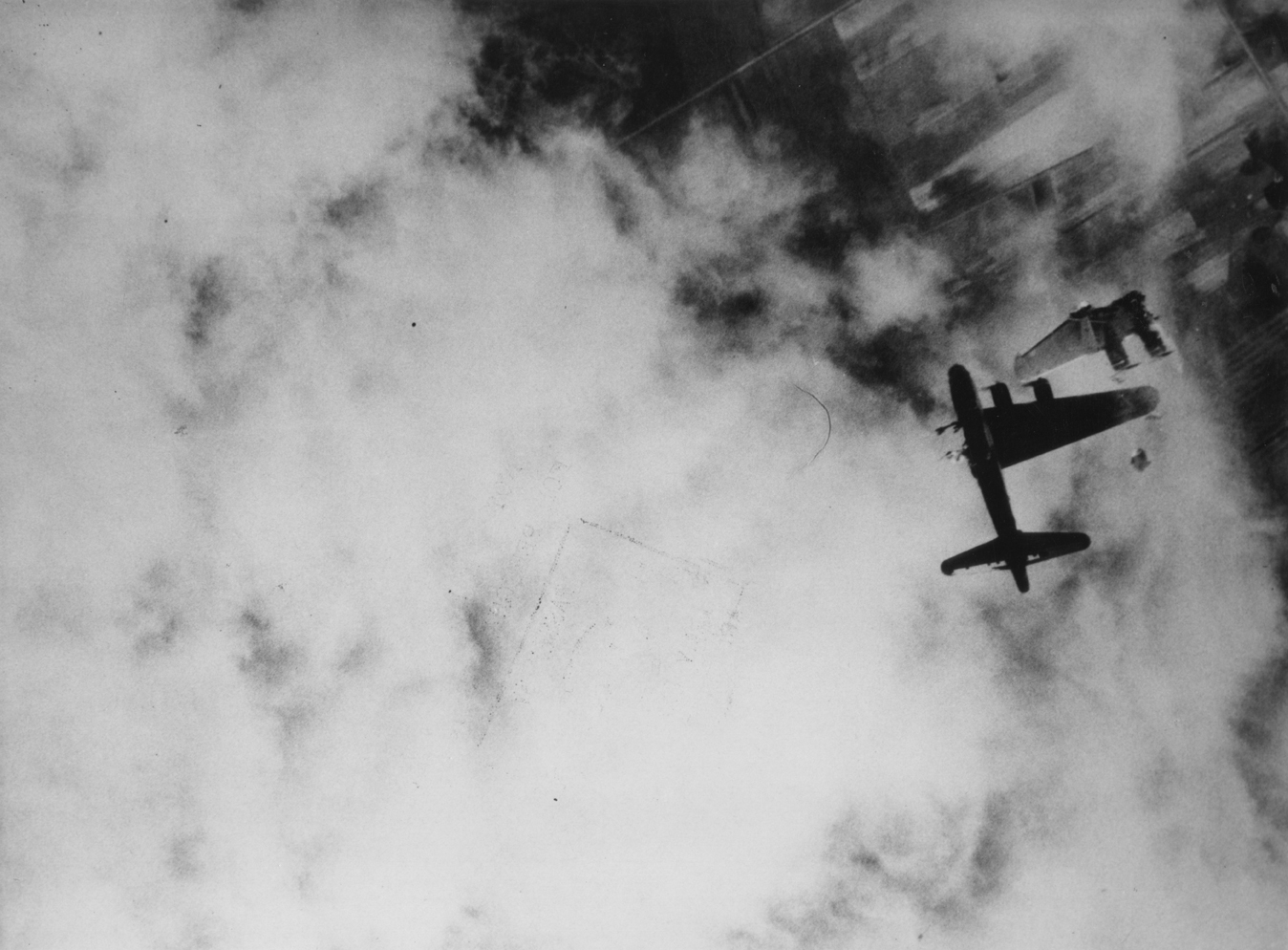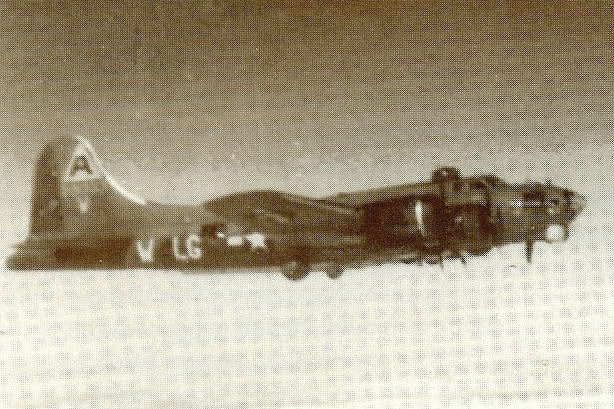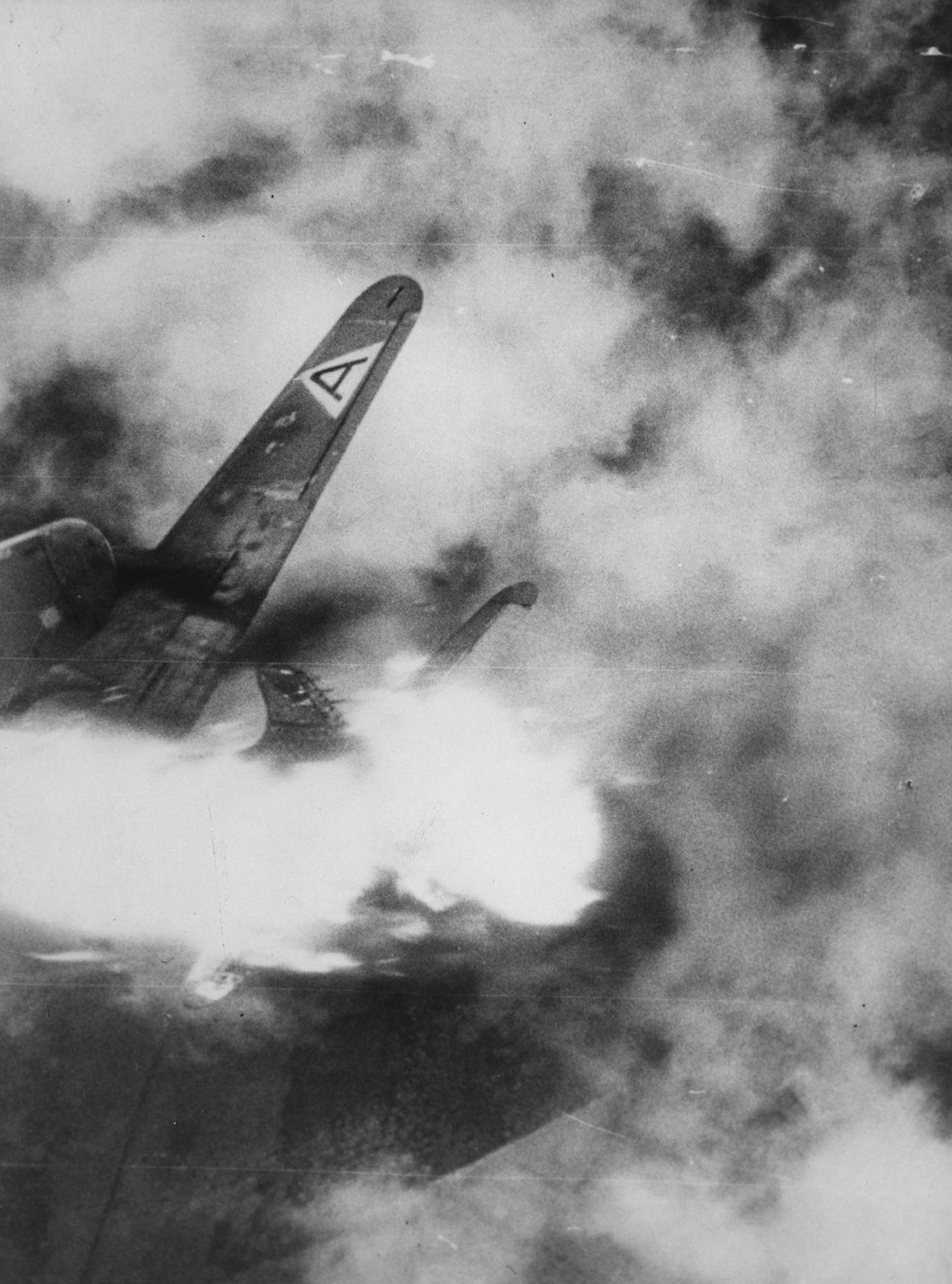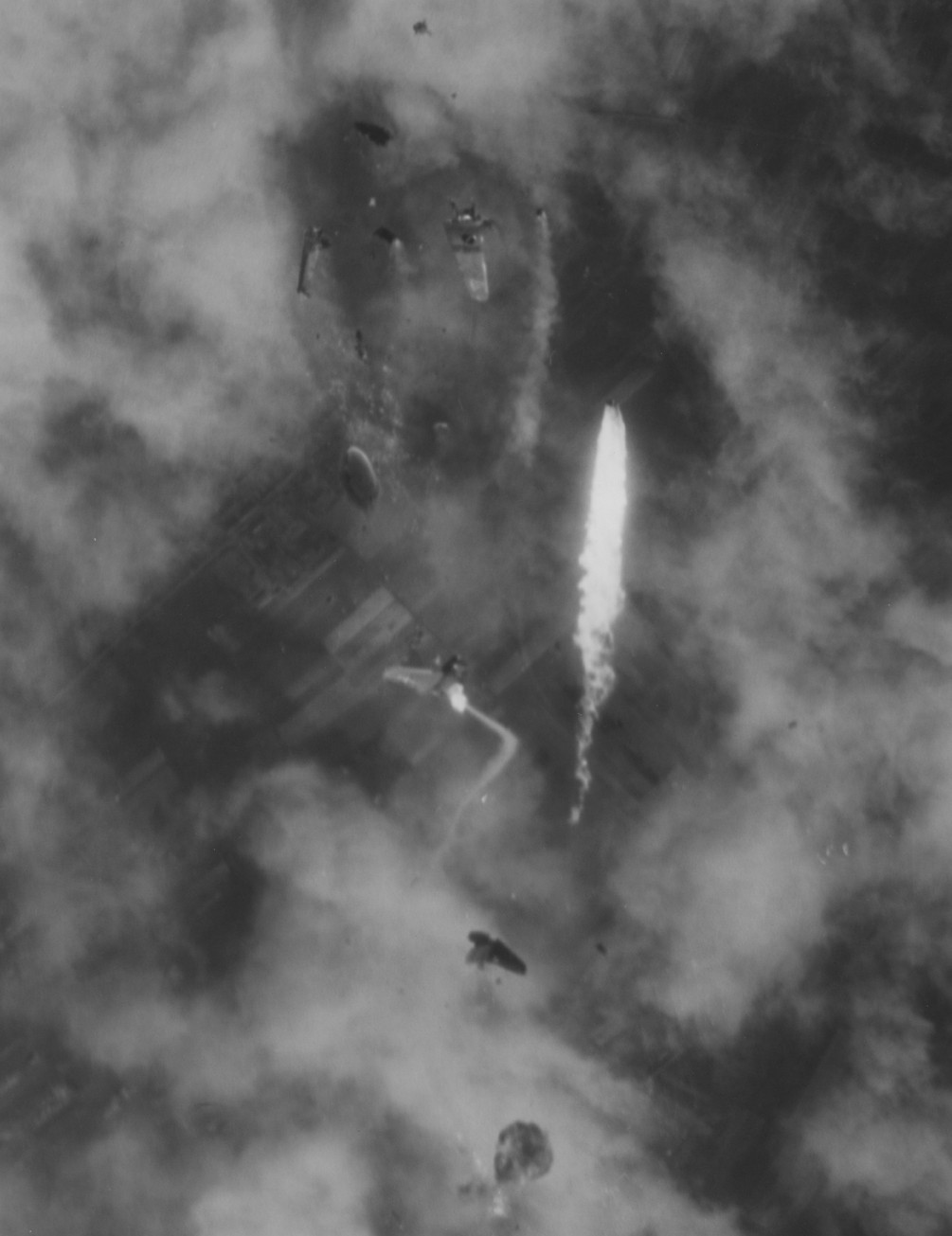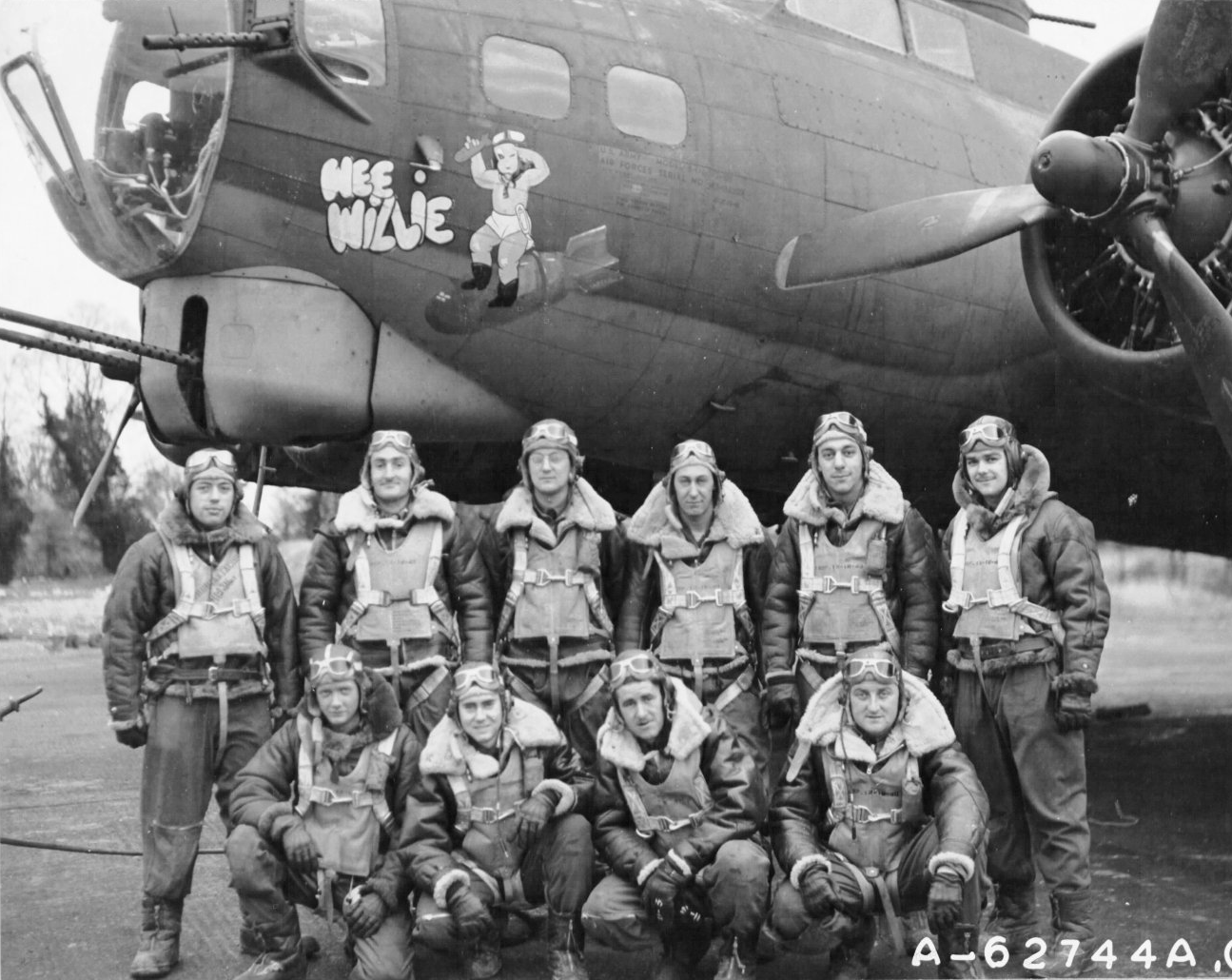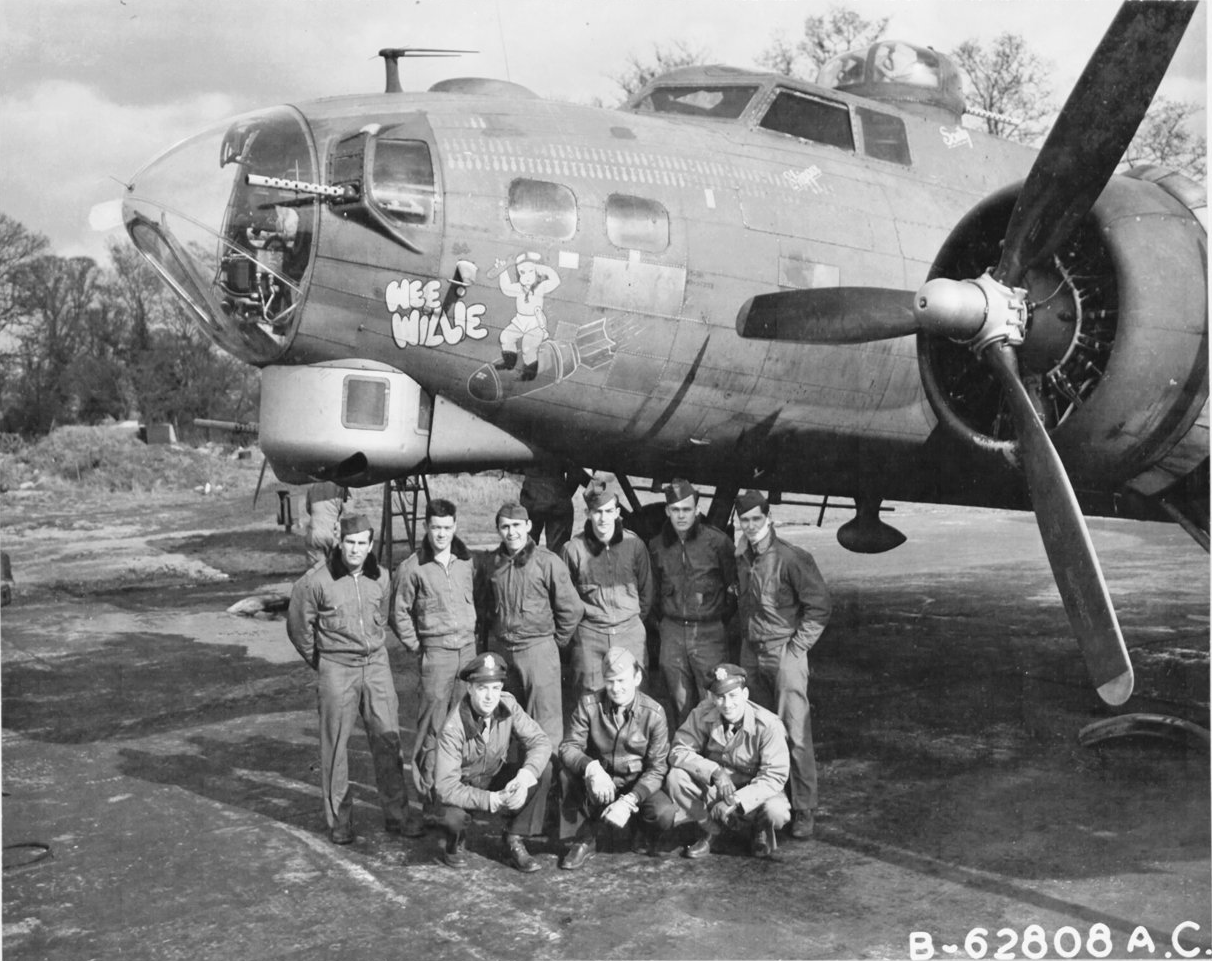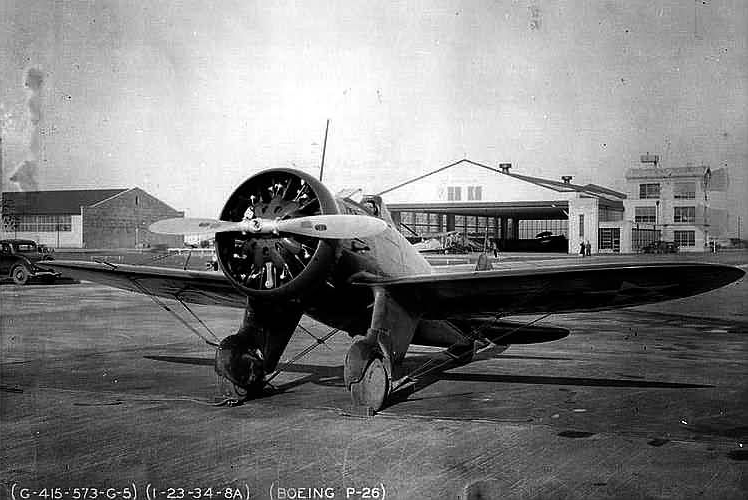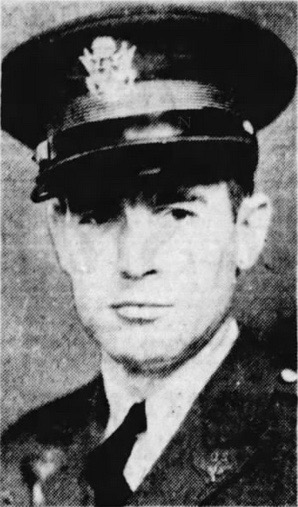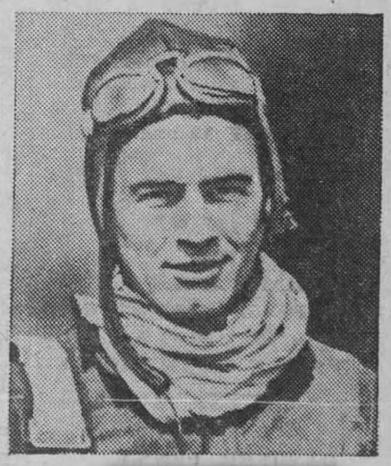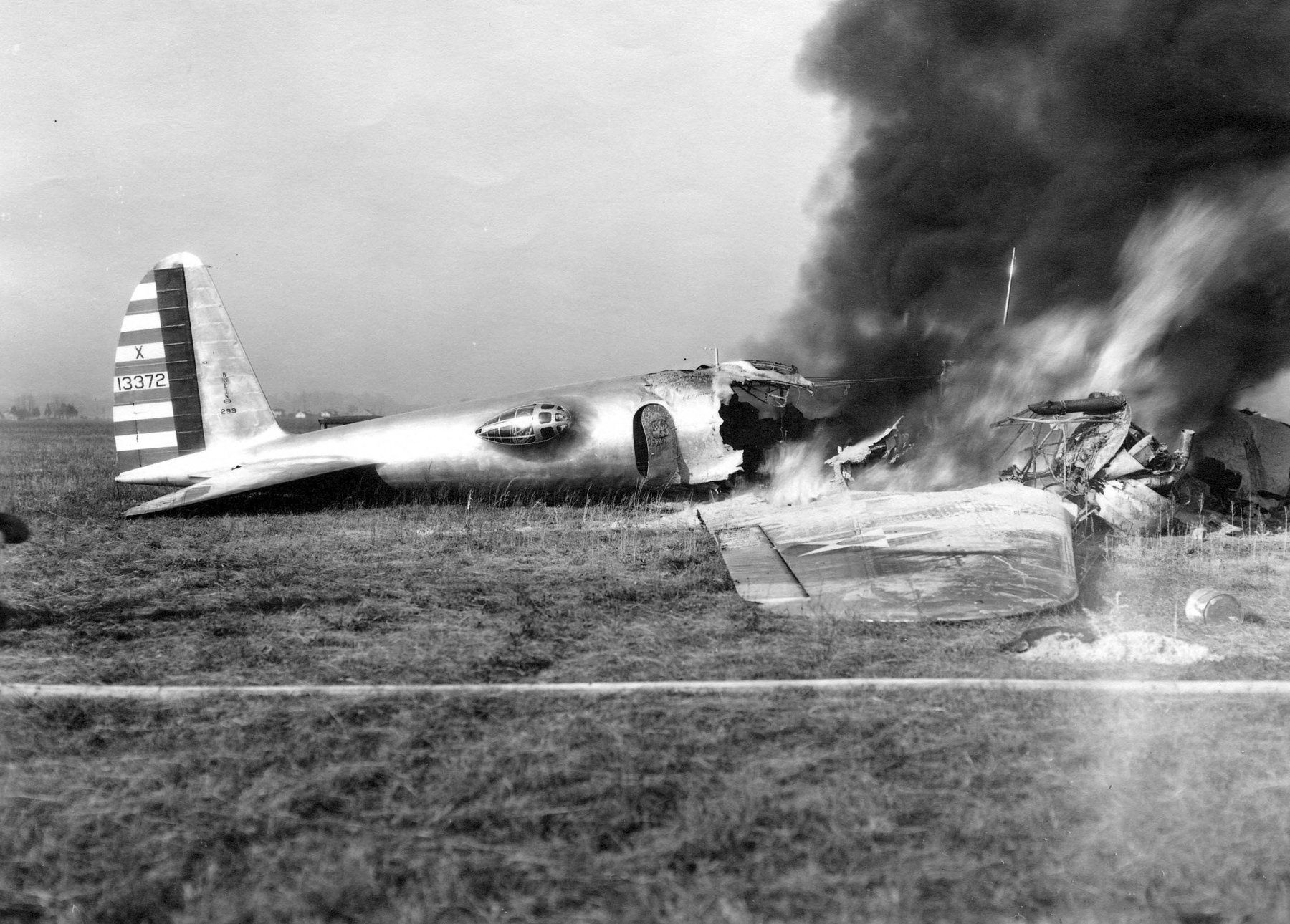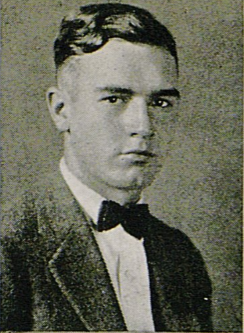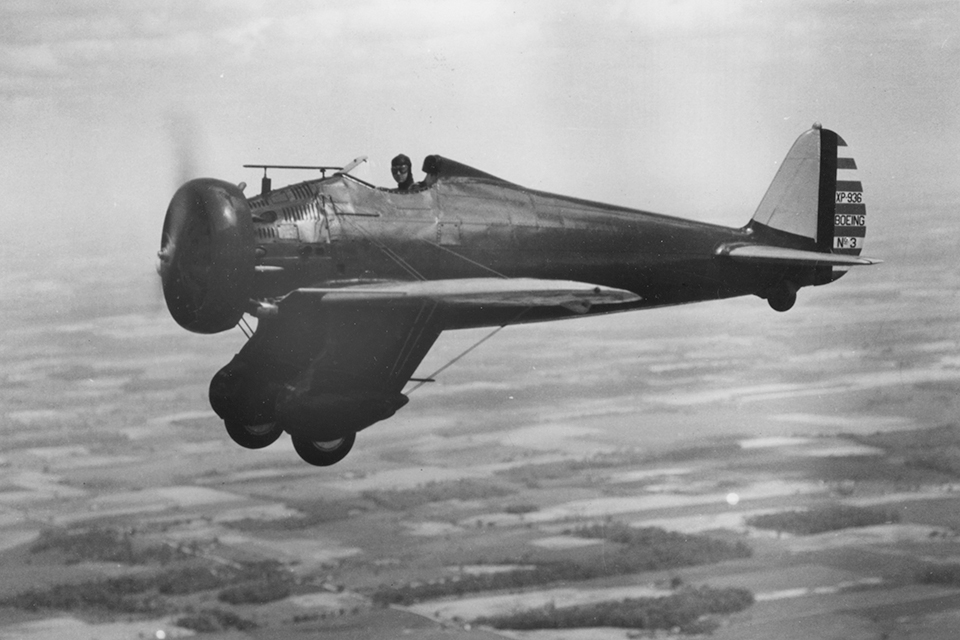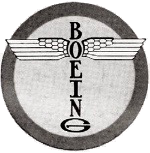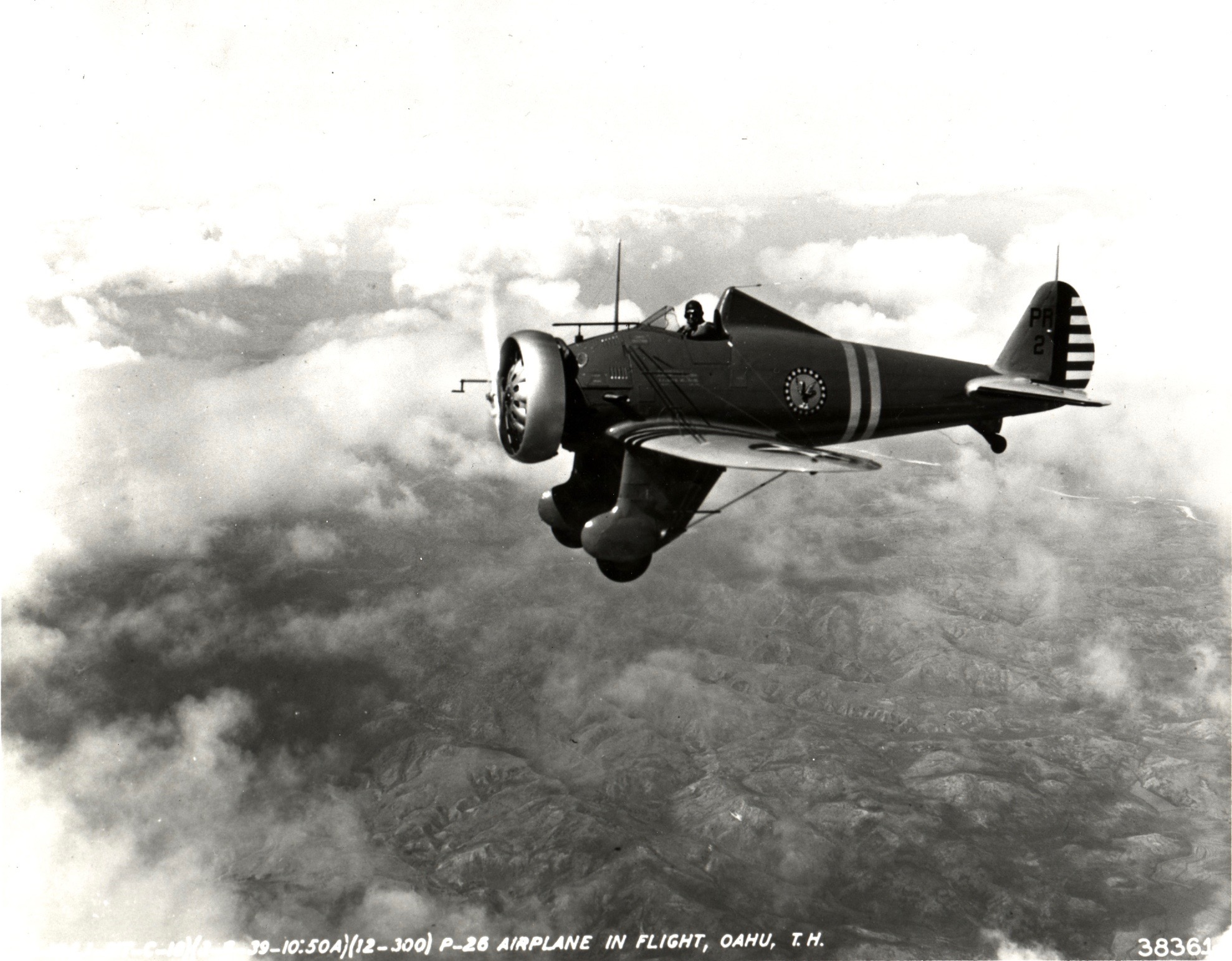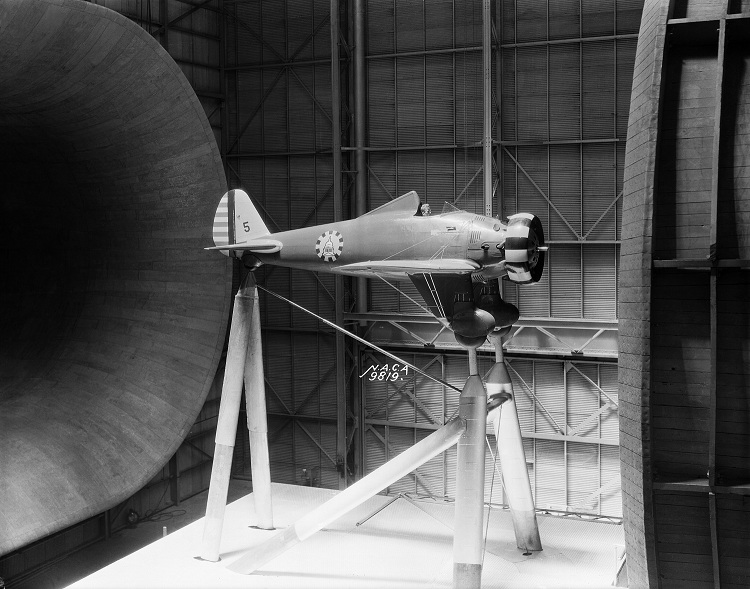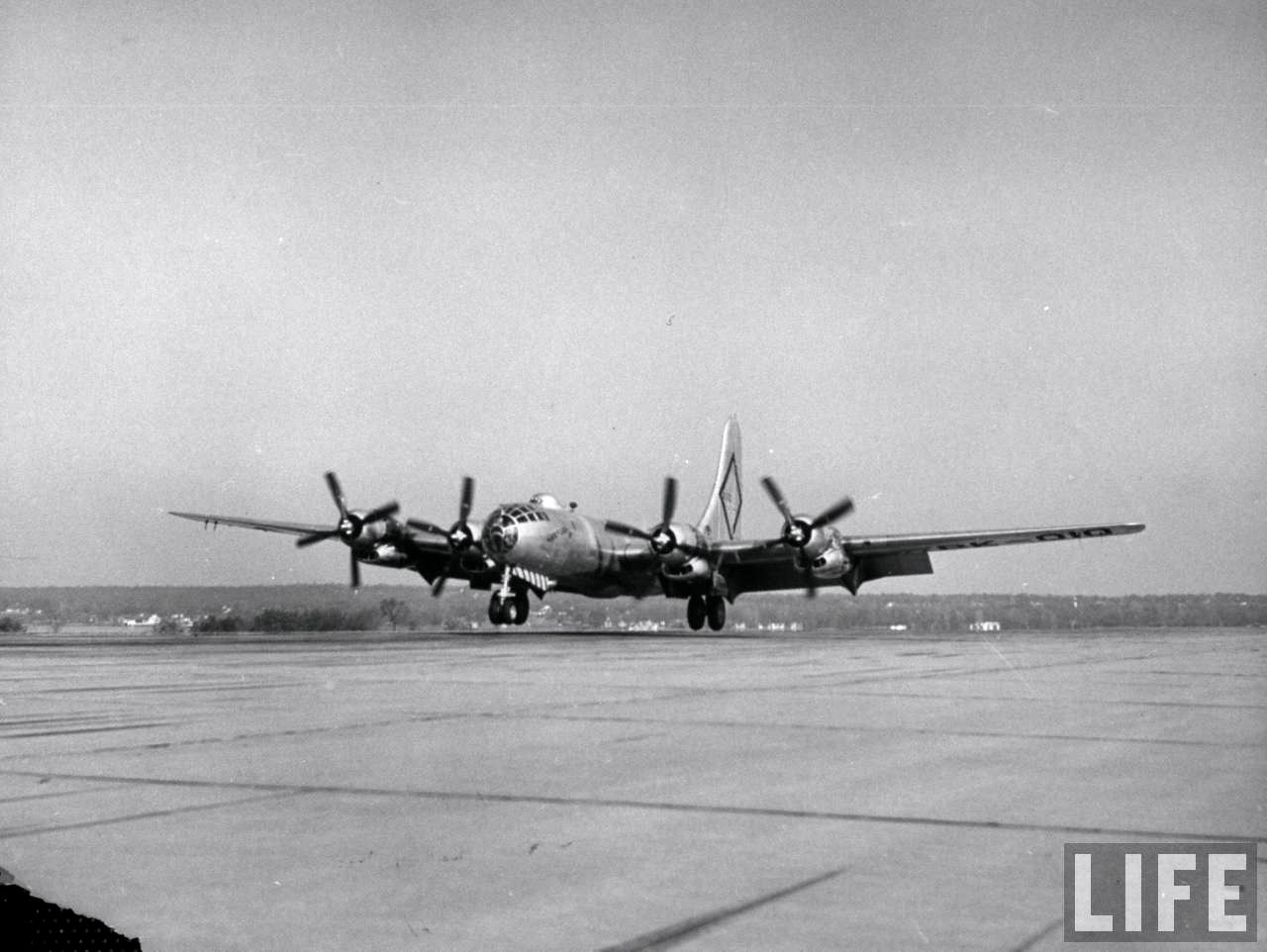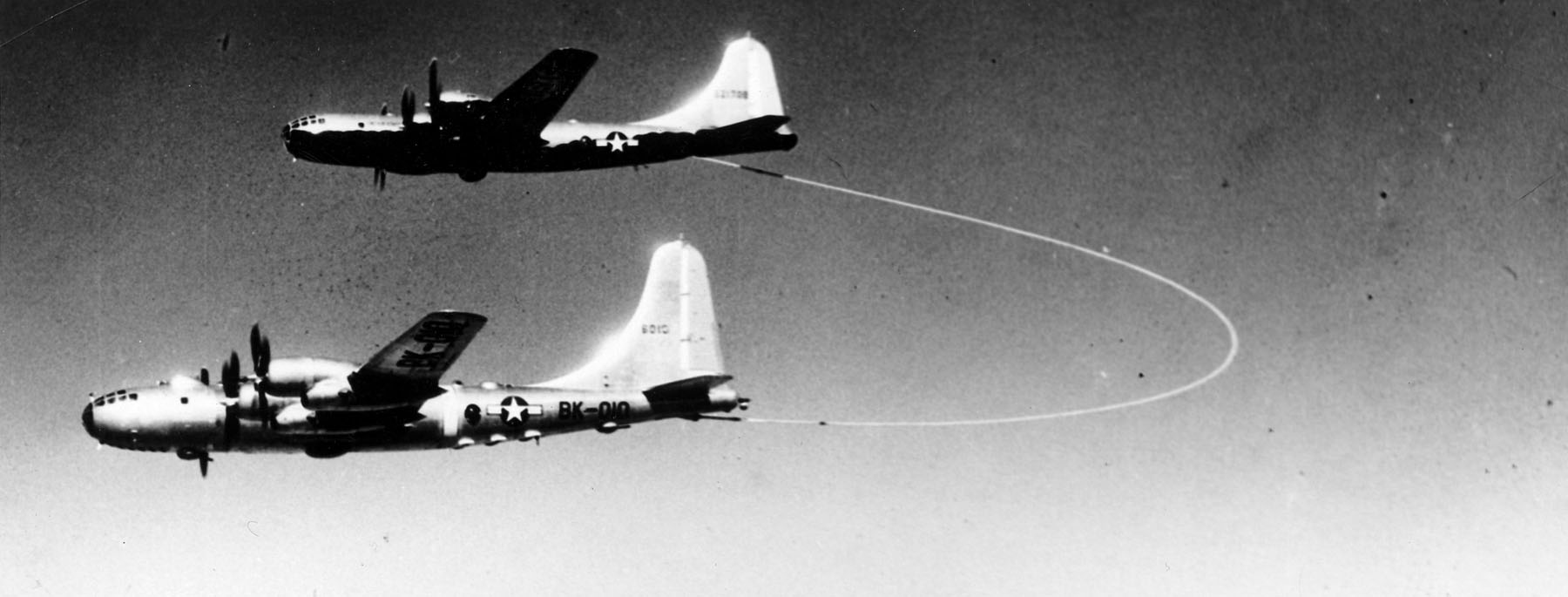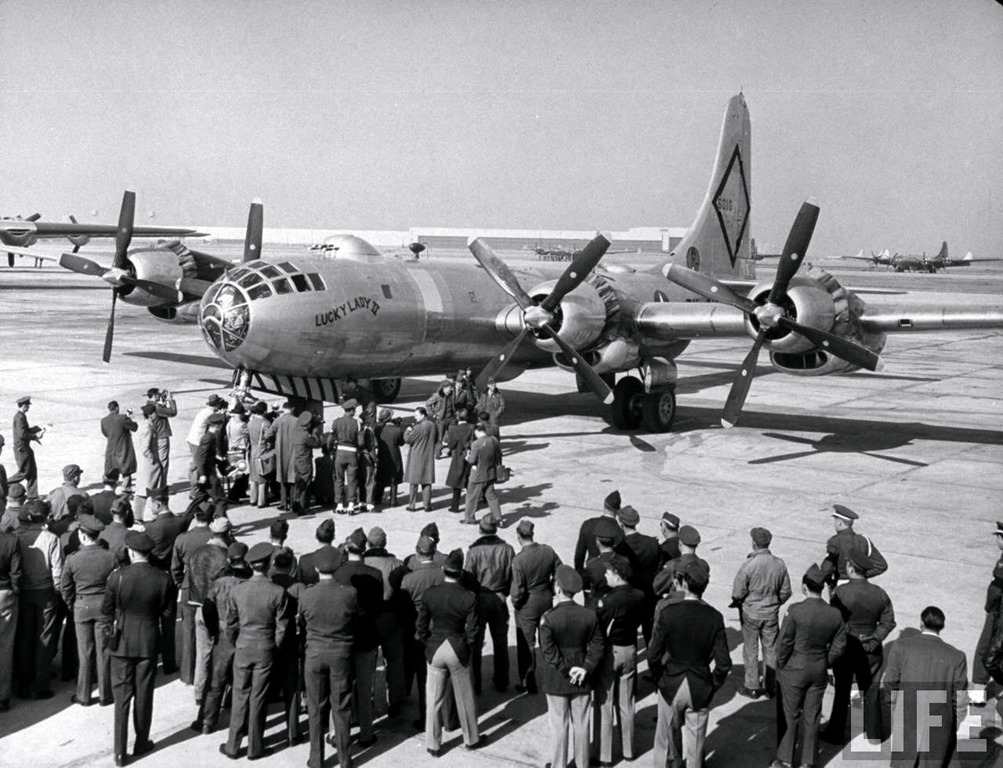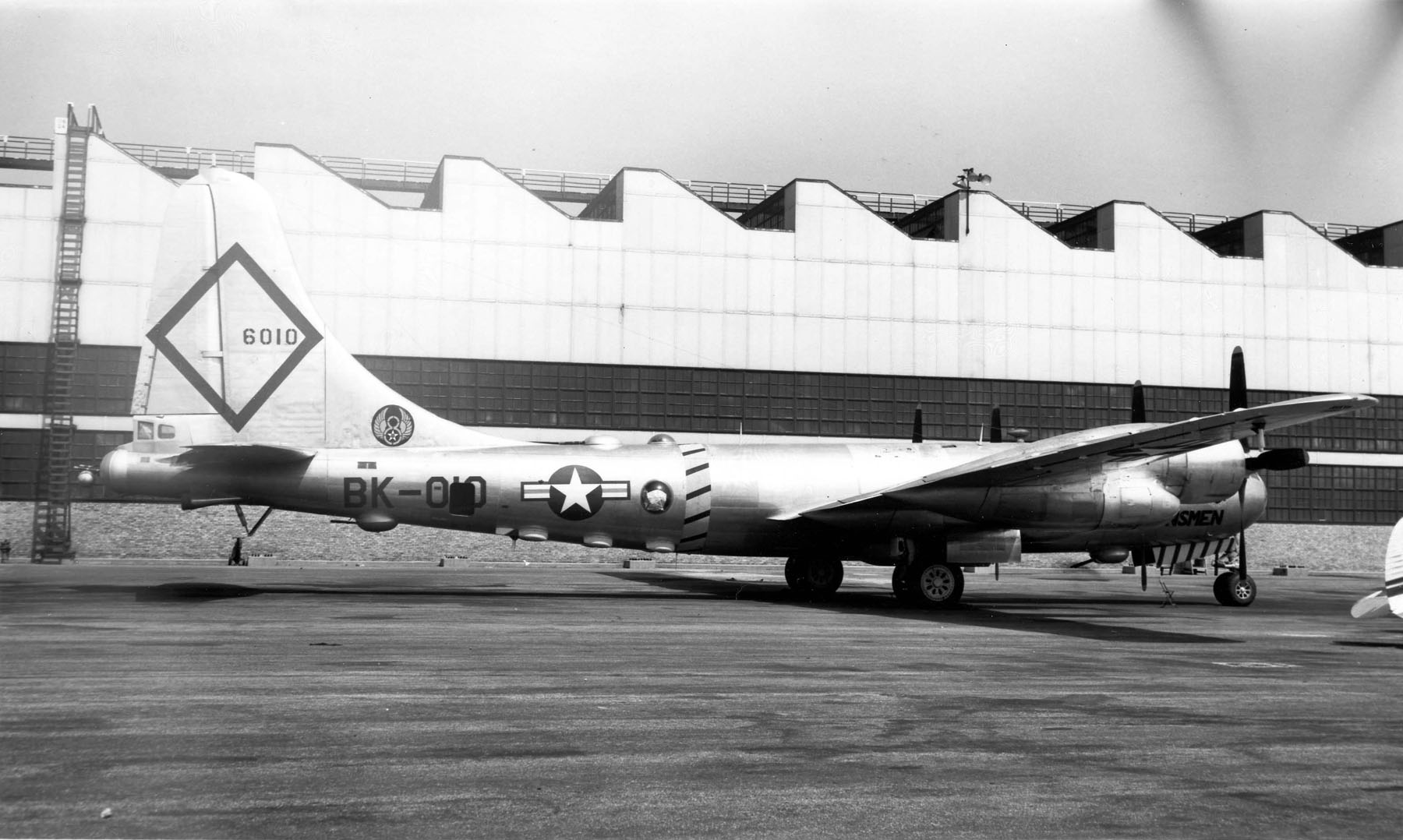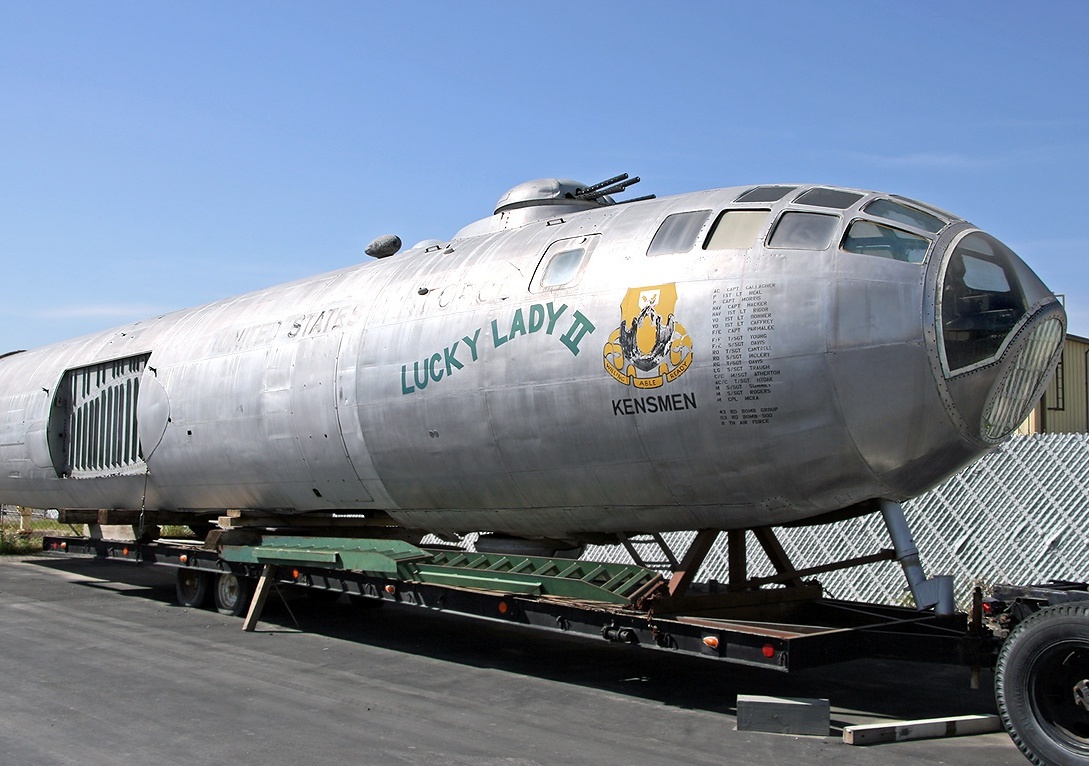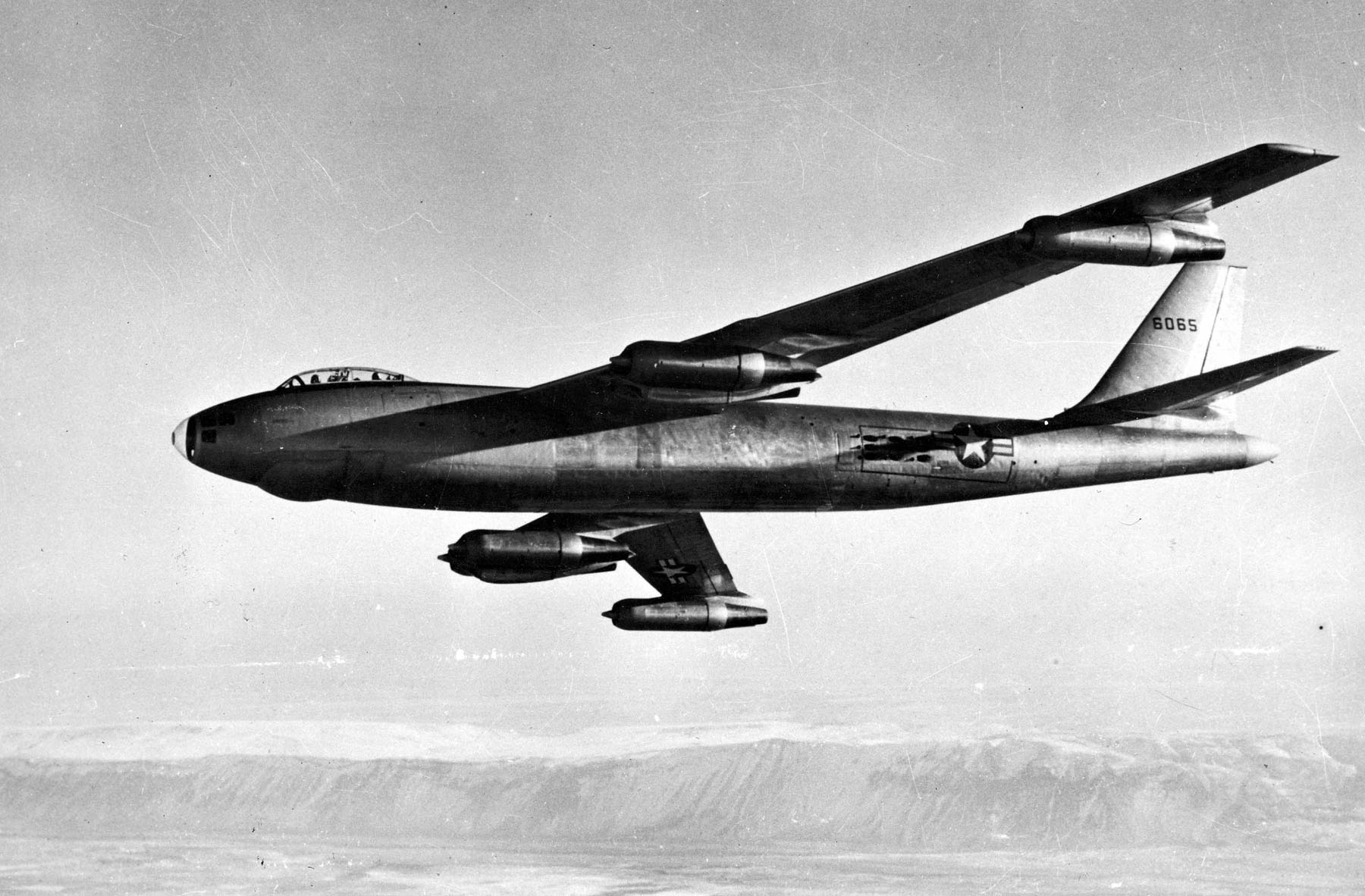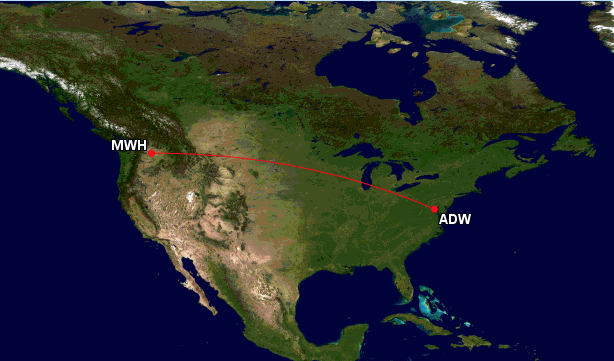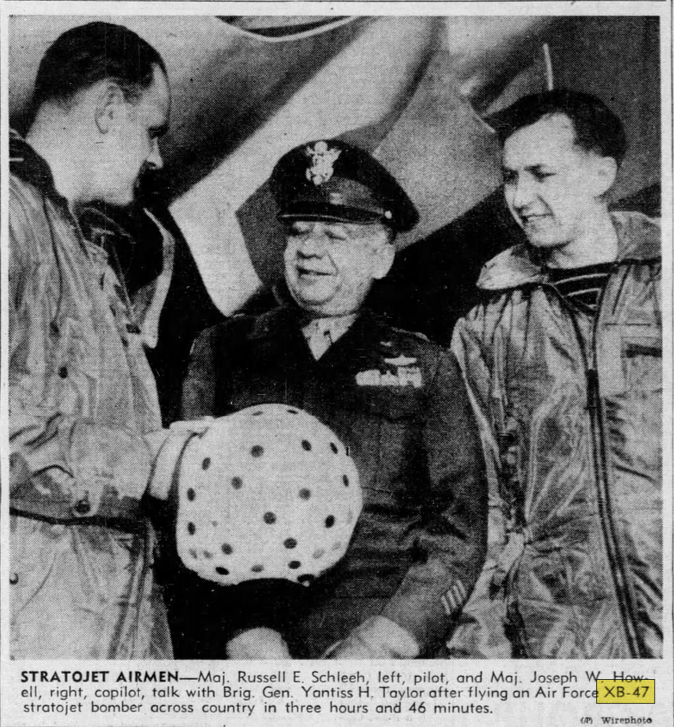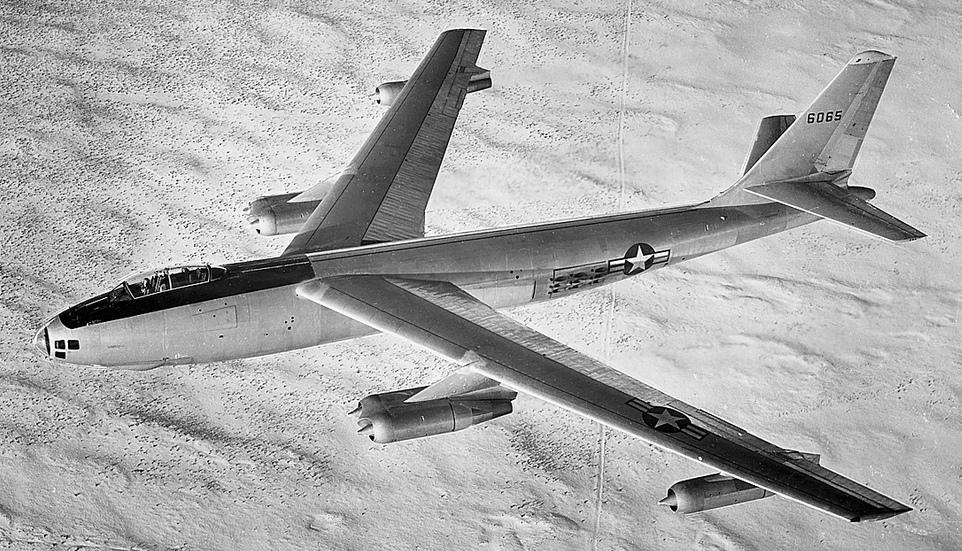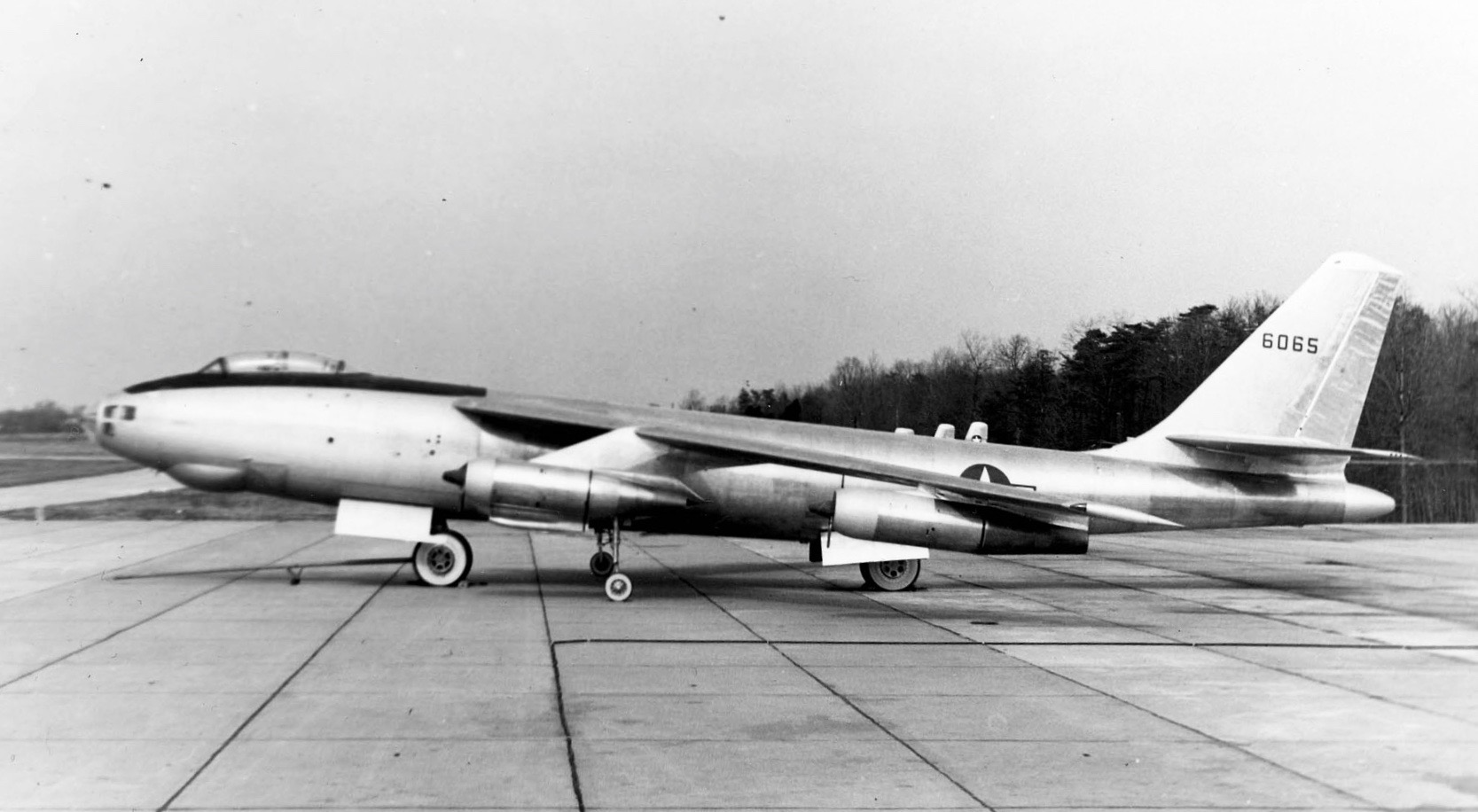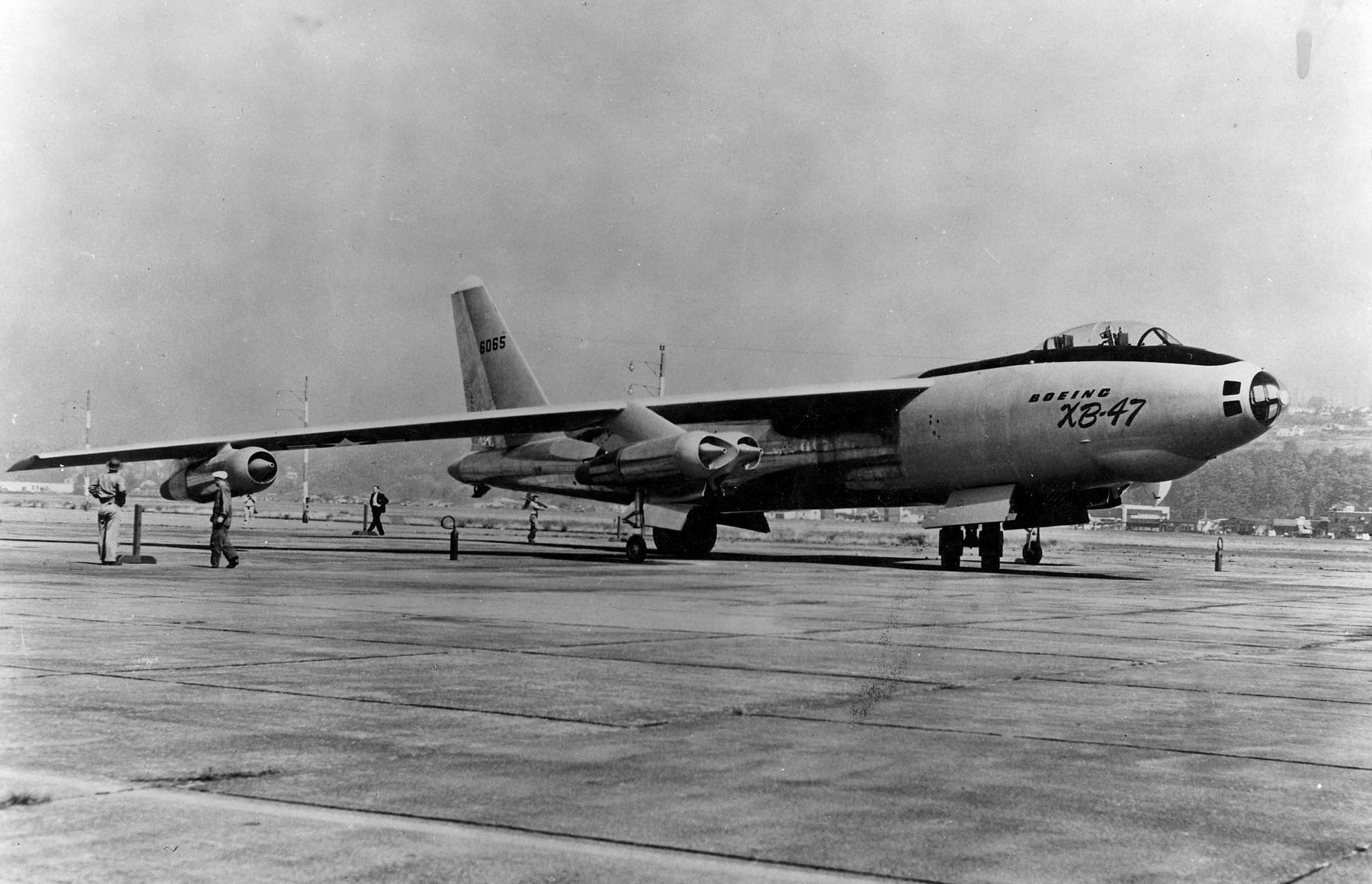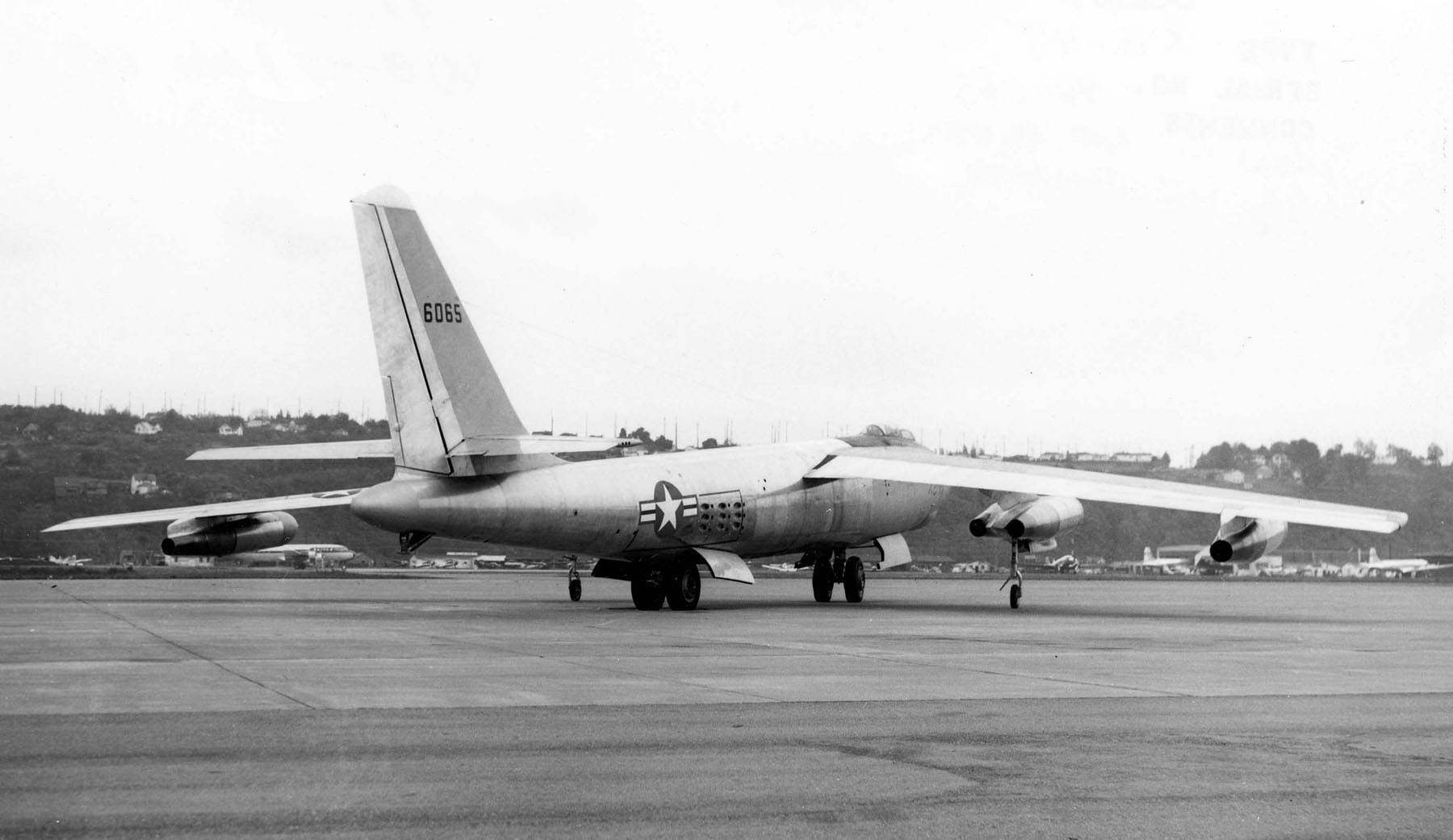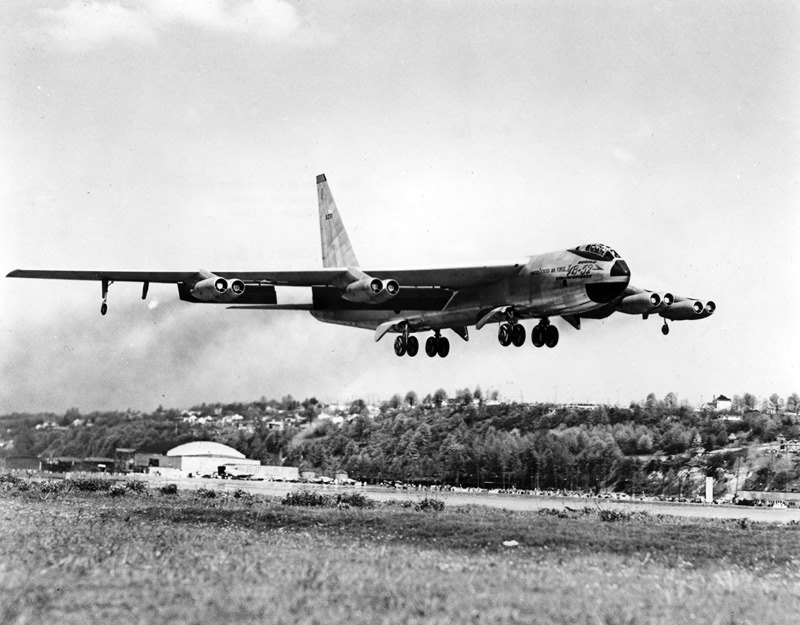
15 April 1952: At 11:08 a.m., Boeing’s Chief of Flight Test, Alvin M. “Tex” Johnston, and Lieutenant Colonel Guy M. Townsend, U.S. Air Force, ran all eight turbojet engines to full power and released the brakes on the YB-52 Stratofortress prototype, 49-231.
With an awesome eight-engine roar, the YB-52 sprang forward, accelerating rapidly, wings curving upward as they accepted the 235,000-pound initial flight gross weight. At V2 (takeoff speed) the airplane lifted off the runway, because of the 6-degree angle of incidence of the wing, and at 11:08 a.m. we were airborne. The initial flight of the YB-52 had begun.
—Tex Johnston: Jet-Age Test Pilot, by A.M. “Tex” Johnston with Charles Barton, Smithsonian Books, Washington, D.C., 1992, Chapter 13 at Pages 397–398.
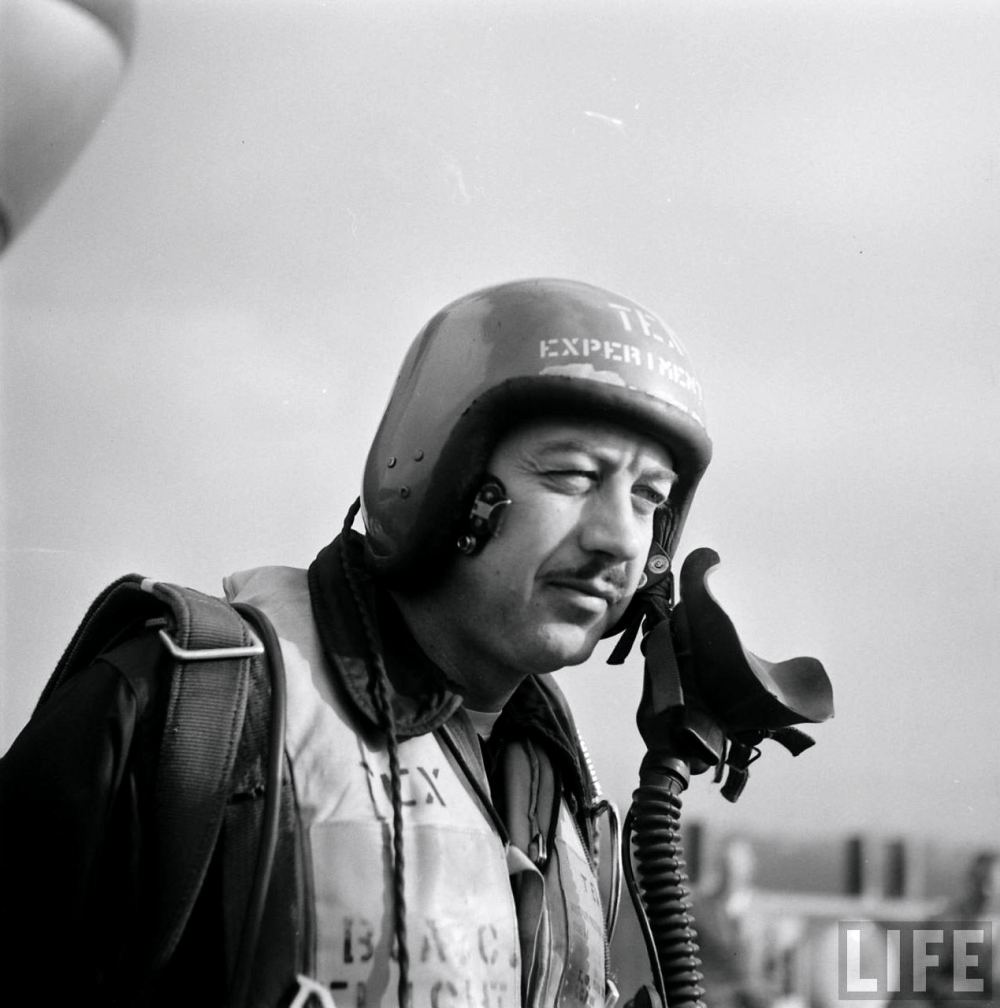
The YB-52 remained over the Seattle area for approximately 40 minutes while Johnson and Townsend ran through a series of systems checks. When completed, they climbed to 25,000 feet (7,620 meters) and flew the new bomber to Larson Air Force Base at Moses Lake, Washington, where they stayed airborne for continued testing. The Stratofortress finally touched down after 3 hours, 8 minutes—the longest first flight in Boeing’s history up to that time. Johnston radioed that the airplane performed exactly as the engineers had predicted.
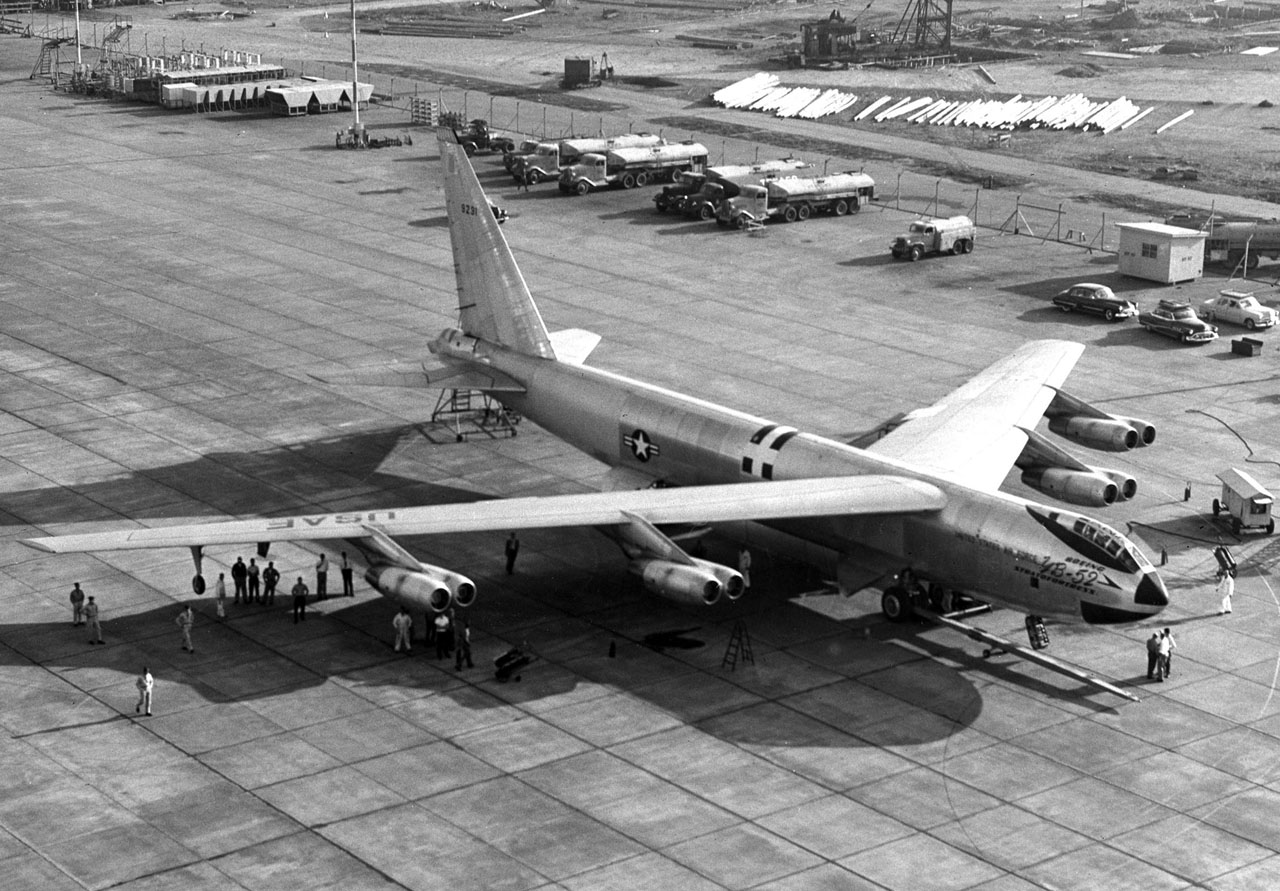
The YB-52 had actually been ordered as the second of two XB-52s, but modifications and additional equipment installed during building resulted in enough differences to warrant a designation change. The first XB-52, 49-230, should have been the first to fly, but it was damaged during ground testing.

The Boeing XB-52 and YB-52 were prototypes for a very long range strategic bomber. Both were built with a tandem cockpit for the pilot and co-pilot, similar to the earlier B-47 Stratojet. The wings were swept and mounted high on the fuselage (“shoulder-mounted”). The eight turbojet engines were in in two-engine nacelles mounted on pylons, below and forward of the wings. This had the effect of preventing the airplane’s center of gravity from being too far aft, and also provided cleaner air flow across the wings. The B-52’s landing gear has four main struts with two wheels, each. They can turn to allow the airplane to face directly into the wind while the landing gear remain aligned with the runway for takeoff and landing. With the landing gear under the fuselage, the wings could be constructed with greater flexibility.
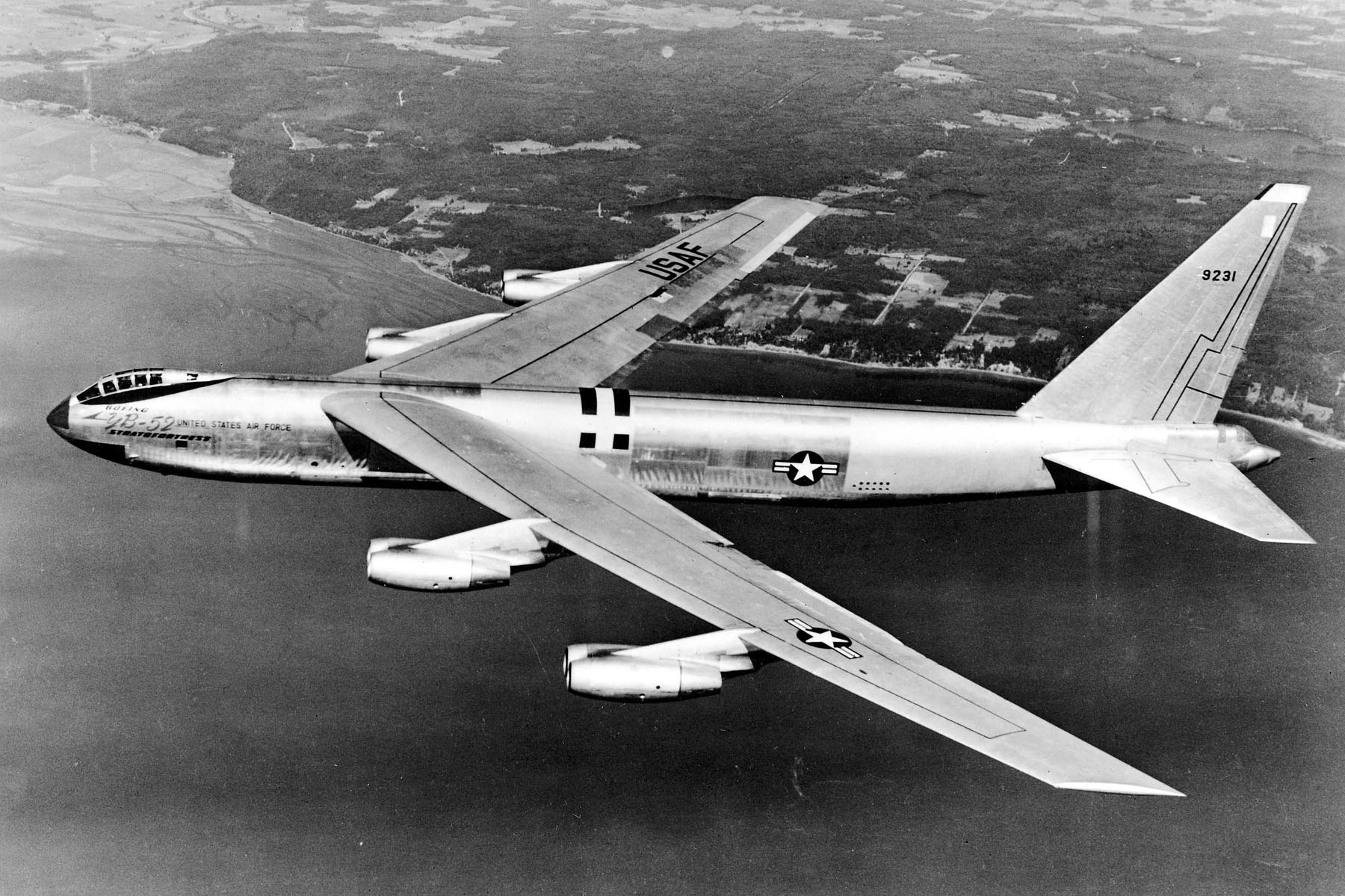
The YB-52 was 152 feet, 8 inches (46.533 meters) long with a wingspan of 185 feet, 0 inches (56.388 meters). The prototype’s overall height was 48 feet, 3.6 inches (14.722 meters). The vertical fin could be folded over to the right so that the B-52 could fit into a hangar. The total wing area was 4,000 square feet (371.6 square meters). The wings’ leading edges were swept aft to 36° 54′. Their angle of incidence was 6° and there was 2° 30′ dihedral. The YB-52 had an empty weight of 155,200 pounds (70,398 kilograms) and gross weight of 405,000 pounds (183,705 kilograms).
The YB-52 was powered by eight Pratt & Whitney Turbo Wasp YJ57-P-3 turbojet engines. The J57 was a two-spool, axial-flow turbojet developed from an experimental turboprop engine. It had 16-stage compressor section (9 low- and 7-high-pressure stages), 8 combustors and a 3-stage turbine section (1 high- and 2 low-pressure stages). The YJ57-P-3s had a continuous power rating of 8,700 pounds of thrust (38.70 kilonewtons). The YJ57-P-3 was 183.5 inches (4.661 meters) long, 41.0 inches (1.041 meters) in diameter and weighed 4,390 pounds (1,991 kilograms).
The YB-52 had a cruise speed of 519 miles per hour (835 kilometers per hour) and maximum speed of 611 miles per hour (983 kilometers per hour) at 20,000 feet (6,096 meters). Its range was 7,015 miles (11,290 kilometers).
The two prototypes were unarmed.
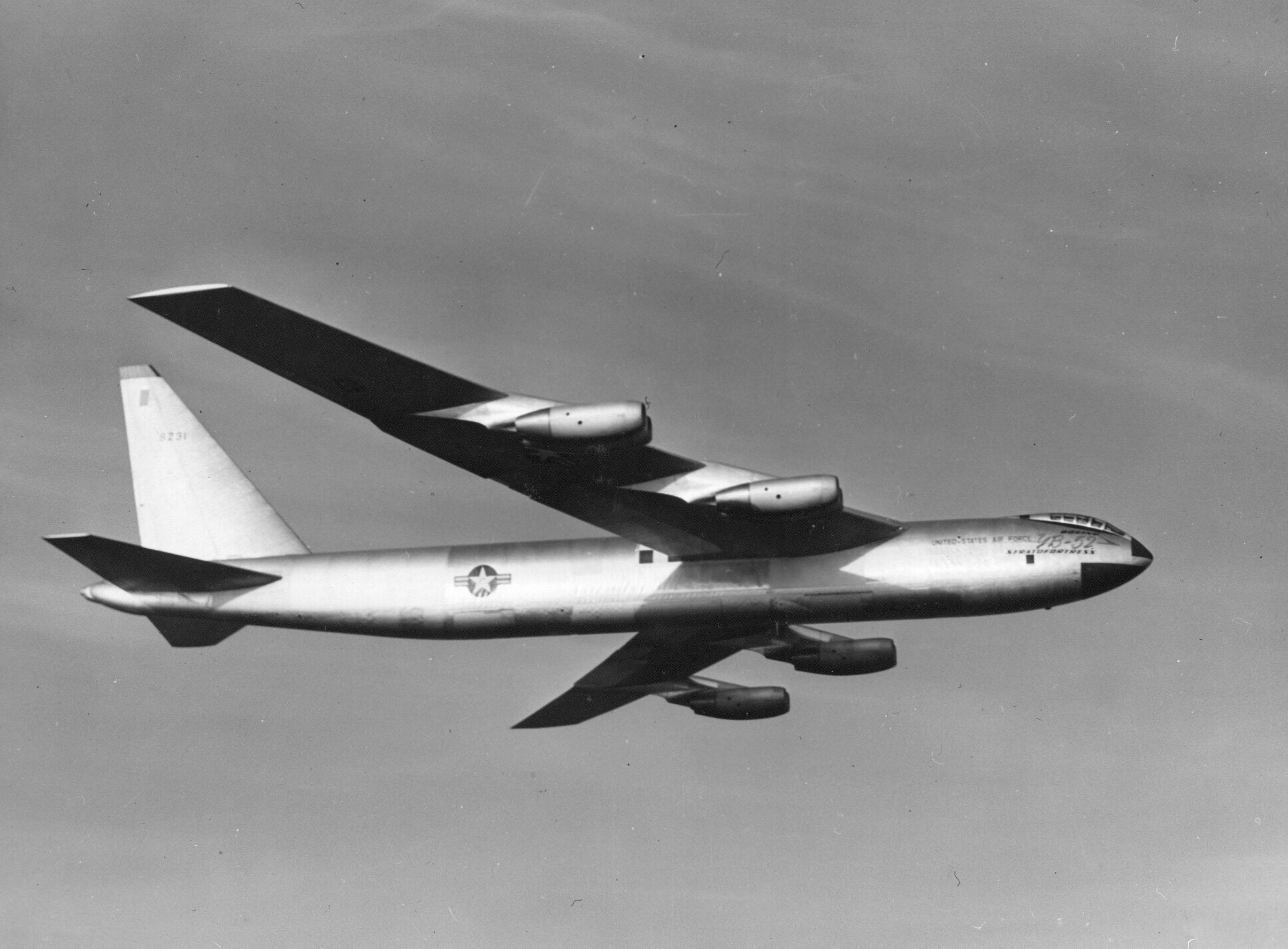
The B-52 was produced by Boeing at its plants in Seattle and Wichita from 1952 to 1962, with a total of 744 Stratofortresses built. The last version, the B-52H, entered service with the Strategic Air Command in 1960. The final B-52, B-52H-175-BW Stratofortress 61-0040, was rolled out at Wichita, Kansas, 26 October 1962. This airplane remains in service with the United States Air Force. The newest B-52 in service, 61-0040 is 62 years old and has flown more than 21,000 hours.

All previous versions, B-52A through B-52G, have long been retired to The Boneyard and scrapped. Of the 102 Boeing B-52H Stratofortress bombers, 76 are still in the active inventory. One, 61-007, known as Ghost Rider, was recently taken from Davis-Monthan and after an extensive restoration and update, returned to service.
The YB-52 prototype was retired to the National Museum of the United States Air Force in the late 1950s. By the mid-60s it was determined to be excess and was scrapped.
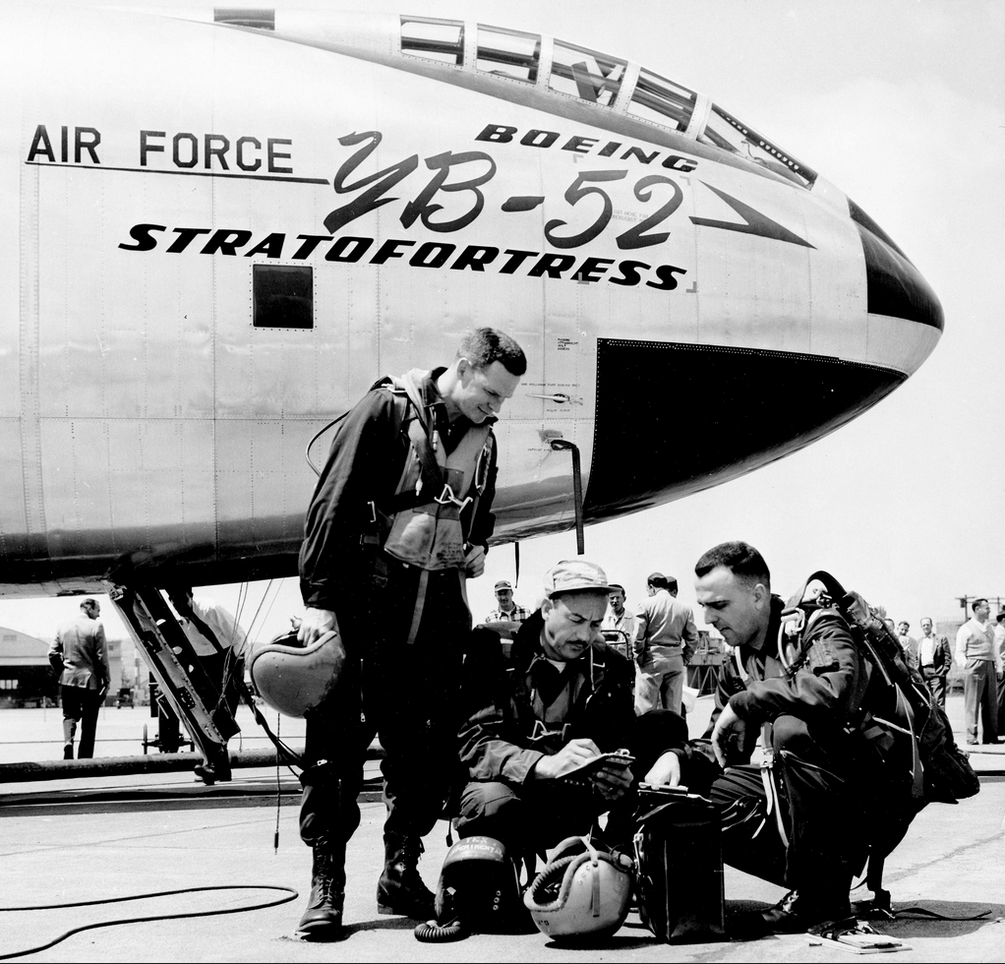
© 2019, Bryan R. Swopes
